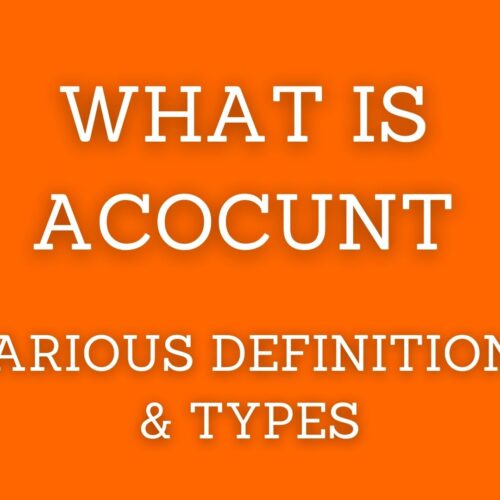The tax system in India before the launching of GST was a bit different. Till the introduction of GST, some of these taxes are collected by the central government and some by state governments. After the tax system upgradation in India, all these taxes are just one flat rate.
In this post, let us understand what the Goods and Services Tax is and its importance. What are the types of GST, advantages & disadvantages, and key benefits of GST?
Table of Contents
- What is GST (Goods & Service Tax)?
- Types of Transactions in Goods & Service Tax
- Different Types of GST (Goods & Service Tax)
- Why are these categories in GST (Goods & Service Tax)?
- Impact of GST (Goods & Service Tax) on the Indian Economy
- Impact of GST (Goods & Service Tax) on Traders
- Impact of GST (Goods & Service Tax) on Consumers
- Key features of GST (Goods & Service Tax) in India:
- Advantages of GST (Goods & Service Tax)
- Disadvantages of GST (Goods & Service Tax)
- GST (Goods & Service Tax) Explained with Help of an Example
- FAQs: Frequently Asked Questions
What is GST (Goods & Service Tax)?

The Goods and Services Tax Act 2017 passed by Parliament introduced the Goods and Services Tax (GST) in India. This is an indirect tax levied on the supply of goods and services. Collected at every stage of the production process, but reimbursed to all parties in the production chain. The ultimate tax burden rests with the final consumer. Some taxes that once existed and were imposed by central and state governments. Central Excise Tax, Service Tax, Additional Duties, Surcharges, State VAT, and Octroi have been replaced by GST.
India’s GST law is a comprehensive, multi-level, location-based tax levied on all value creation. Tax rates, rules, and regulations are governed by the GST Council with the mission of one nation, one tax concept. The Council is made up of the Finance ministers of both the Center and the state. This means that taxation is currently regulated by both the central and state governments through central GST and state GST. Central GST (CGST) from the central government and State GST (SGST) from the state governments are charged on transactions made within a single state. Integrated GST (IGST) is imposed by the central government on government-to-government transactions and imported goods and services. However, this complicates the tax collection process for state governments. This is because state governments are no longer able to collect the taxes they previously owed to the central government. To determine if CGST, SGST, and IGST are applicable, we first need to know what type of transaction is:
Types of Transactions in Goods & Service Tax
Interstate transaction
If the supplier’s location is the same as the buyer’s location, i.e., Same state.
Intra-state transaction
Where the supplier’s location and the buyer’s location are in different states.
This division was made taking into account the federal structure of the country. Both the central and the states are empowered by the constitution to collect taxes. Both have different tasks to accomplish and must raise tax revenues to do so.
Different Types of GST (Goods & Service Tax)
GST has replaced many indirect taxes in India. The Goods and Services Tax Act was passed by the Indian Parliament on March 29, 2017, and came into force on July 1, 2017.
GST is differentiated into the following 4 types:
SGST (State Goods and Service Tax)
SGST means State Goods and Services Tax. It includes all taxes levied by the state i.e., VAT, sales tax, cesses, and surcharges etc.
CGST (Central Goods and Service Tax)
CGST is the Central Goods and Service Tax. It includes all the taxes collected by the central government of India. For example, central surcharges, central excise duty, cesses and other indirect taxes that were applicable earlier before the GST.
IGST (Integrated Goods and Service Tax)
IGST is calculated when the movement of goods or services from one state to the next occurs. If goods are transported from Tamil Nadu to Kerala, IGST will be charged on such goods. Income from IGST will be divided between state and local governments according to rates set by experts.
UTGST (Union Territory Goods and Service Tax)
UTGST is known as the Union Territory Goods and Services Tax. Union Territory GST applies to the Union Territories of India namely Chandigarh, Lakshadweep, Daman and Diu, Dadra and Nagar Haveli, and Andaman and Nicobar Islands.
Why are these categories in GST (Goods & Service Tax)?
If the main goal of GST is One Nation One Tax, why are these categories of GST? The reason is India is a federal state. There are too many levels and levels of business. The federal system in this context means that both state and central governments can collect taxes. The old system levied different indirect taxes at the state and central government levels. All taxes are now included in 1.
So, for business services and goods bought and sold within the state, there is another system where state GST and central GST apply, and both get a cut. IGST is charged on interstate transactions, goods sold and services rendered.
Numerically, IGST is always a combination of CGST and SGST. For IGST, it is the seller who declares the tax at the IGST rate to the central government, after which the tax is shared with the states.
For example, 18% GST would be:
IGST for Interstate Movement is 18% in which
9% • CGST
9% • SGST
Impact of GST (Goods & Service Tax) on the Indian Economy
- GST helps create a common domestic market in India and also helps stimulate foreign investment.
- GST attracts foreign investors with the Make in India campaign.
- As India is a developing country with a huge population, this leads to a shortage of jobs. GST, therefore, helps reduce poverty and create more jobs.
- SGST (State Goods and Services Tax) and IGST (Integrated Goods and Services Tax) help reduce tax incentives.
Impact of GST (Goods & Service Tax) on Traders
- Multiple taxes are combined into one tax.
- It helps reduce the cascading impact of taxes at each stage.
- Neutralization of export taxes.
- simple tax system.
- There is no longer a difference between goods and services. Developing a common domestic market.
Impact of GST (Goods & Service Tax) on Consumers
- Simple control system.
- A reduction in the price of goods or services.
- Tax transparency.
- Taxes are uniform nationwide.
- Employment opportunities have increased.
Key features of GST (Goods & Service Tax) in India:
Multi-Tier Tax
Items undergo several changes of ownership before reaching the final consumer. The process is usually followed till the final consumer is: After purchasing raw materials, manufacturing, selling to wholesalers, and selling to retailers, the product finally reaches the end user. GST will be charged at each of these stages. So, it becomes a multi-tier tax.
Value Addition at Each Level
The manufacturer of the product purchases the raw materials. The value of raw materials increases through processing. The manufacturer then sells the product to a wholesaler or warehouse that packs and labels the product. This is another added value that wholesalers bring to sell to retailers. Retailers may choose to package the product in even smaller quantities and market the product for better sales. Each stage adds monetary value to the product and charges GST registration for all of this added value.
Destination-Based Tax System
GST is a consumption-based tax levied at the point of consumption because the tax burden rests with the consumer. In other words, if goods are manufactured in one state and sold in another state, tax revenue is paid to the state where the goods are consumed, not the state in which they are manufactured.
Advantages of GST (Goods & Service Tax)
GST primarily eliminates tax cascading effects on the tax regime when selling goods and services. Its effect directly affects the cost of goods. The prices of many items have been reduced, including Prices of movie tickets, restaurant meals, televisions, washing machines, stoves, and more. GST is a technology-driven tax as all activities such as registration, tax filing, refund requests, and responding to notifications must be done through the GST portal online. This speed up the process. It also costs less to do business because registered retailers have no hidden costs.
Disadvantages of GST (Goods & Service Tax)
The introduction of GST registration has reduced the tax burden on many items but has increased the price of some items. Items that have gone up in price include mobile phone bills, apartment rent, school lunches, sodas, tobacco and tobacco products, and many more. Also, remember that India is a low-literate country as all GST procedures are done online. Many people are unaware of the process and how to navigate the online GST portal and may need assistance.
In previous tax systems, the tax liability was passed on at every stage of the transaction. This means that taxes collected at each stage increase the item’s value (in terms of price). The final liability of the consumer in relation to the price paid for goods or services is therefore higher. There are ways to claim credit for taxes paid on input purchases. This means that the person who paid the tax can file a tax claim after filing the tax return. Therefore, every time an input tax credit is claimed, the selling price is reduced.
The recent introduction of E-Way invoices for the interstate movement of goods has made it possible to move goods in a phased manner. Anyone involved in the process of moving goods from one place in the state to another; manufacturers, dealers, and freight forwarders are having advantages. This also benefits tax authorities as less time is spent on checkpoints and tax evasion. However, being a brand new tax system, it can create confusion in the taxpayer’s mind and result in paying the wrong kind of GST or the wrong amount of GST.
GST (Goods & Service Tax) Explained with Help of an Example
Manufacturers
A maker of a particular device or product, for example, a trouser maker, needs zippers, fabrics, buttons, and various other equipment to make trousers, and these raw materials cost 500 Indian rupees including 10% tax (50 rupees) as per GST regulations.
Once the product is manufactured, the manufacturer has to factor that value into the product, which can be assumed to be Rs.40. In this case, the total cost of the product is 540 (500 + 40). Taking into account the 10% tax, it comes to 54 rupees. Currently, the manufacturer has already paid 40 rupees when purchasing raw materials, so the tax is 14 rupees (54 rupees – 40 rupees).
Wholesaler
A wholesaler bought the product for 540 rupees and found some profit margin. For this, he accepts a certain amount of 30 rupees. So, the total cost of the clothes is 570 rupees. Same he applies the 10% principle and the tax amount is Rs 57. Of these 57 rupees, 54 rupees have already been paid by the manufacturer. Therefore, the total tax paid by the wholesaler is 3 rupees. (Rs57 – Rs54)
Retailer
At the last stage, the retailer purchases the shirt for Rs.570. He also cares about getting some profit from the product. Assuming he set a margin of 10 rupees. Then the total price of the product is 580 rupees (570 Rs + 10 Rs). If the product is subject to 10% tax, the tax charged will be Rs 58. Here, the manufacturer and wholesaler are already offering Rs 57, but the retailer says he only has to pay Rs 1 (Rs 58-Rs 57). The total tax from the manufacturer to wholesaler to the retailer is separated by (40+14+3+1).
Further Readings: Click on the below links to know the registration process of GST.
FAQs: Frequently Asked Questions
What is the GST (Goods & Service Tax)?
GST is a multi-level tax gadget that is complete in nature and implemented at the sale of products and services. The foremost purpose of this taxation gadget is to lessen the cascading impact of different Indirect taxes and it’s miles relevant at some stage in India.
How to register for GST (Goods & Service Tax) online?
GST registration may be effortlessly accomplished on the web GST portal. Business proprietors can fill a shape at the GST portal and put up the essential files for registration. Businesses ought to whole the GST registration process. It is against the law to perform operations without registering for GST and heavy consequences are levied for non-registration.
What is the turnover required for GST (Goods & Service Tax) registration in India?
According to GST rules, it’s miles obligatory for a commercial enterprise that has a turnover of above Rs. 40 lakh to sign up as an everyday taxable entity. This is known as the GST registration process. The turnover is Rs.10 lakh for corporations which are found in hill states and North-Eastern states.



